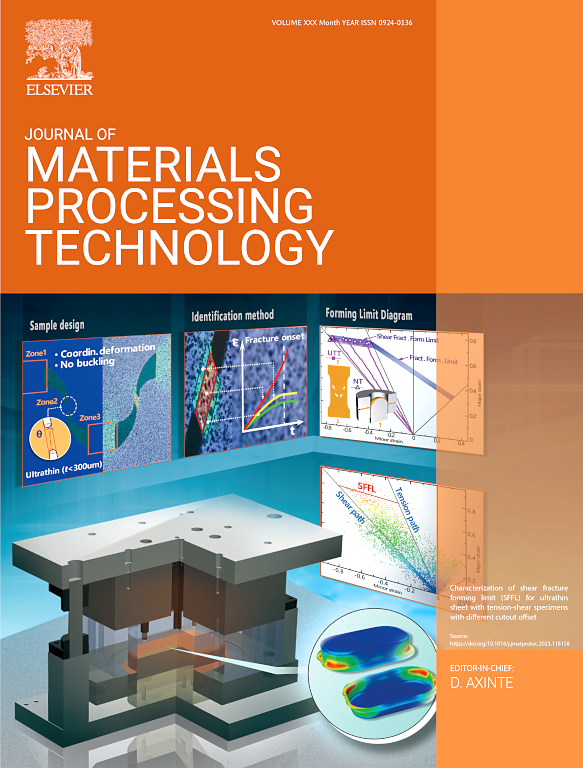Metal droplet ejection technology based on water hammer effect for additive manufacturing
IF 6.7
2区 材料科学
Q1 ENGINEERING, INDUSTRIAL
Journal of Materials Processing Technology
Pub Date : 2025-02-20
DOI:10.1016/j.jmatprotec.2025.118785
引用次数: 0
Abstract
Currently, in the field of molten droplet jetting for metal additive manufacturing, existing technologies such as pneumatic, piezoelectric, and magnetohydrodynamic methods face challenges in balancing device complexity, droplet ejection stability, and ejection frequency due to inherent limitations in their driving mechanisms. This study advances the traditional theories and techniques of droplet-based metal additive manufacturing by introducing a novel water hammer-based molten droplet jetting method. Through micron-scale rapid reciprocating motion of the jet tube along its axial direction, pulsed pressure is generated, enabling stable, efficient, and on-demand jetting of molten metal. The investigation systematically analyzed the effects of displacement, nozzle diameter, motion period, and liquid column height on the ejection behavior. The effects of different process parameters on pulsed pressure and jetting behavior were investigated. An increase in jet tube displacement or liquid column height, as well as a decrease in nozzle diameter, results in greater pulsed pressure, leading to higher droplet flight velocity. The additive manufacturing capabilities of this method for two-dimensional and three-dimensional structures have been validated.
基于水锤效应的增材制造金属液滴喷射技术
目前,在金属增材制造熔滴喷射领域,现有的气动、压电和磁流体动力等技术由于其驱动机制的固有局限性,在平衡装置复杂性、喷射稳定性和喷射频率等方面面临挑战。本研究通过引入一种新型的水锤基熔滴喷射方法,对传统的液滴金属增材制造理论和技术进行了改进。通过射流管沿轴向的微米级快速往复运动,产生脉冲压力,实现稳定、高效、按需喷射熔融金属。系统地分析了位移、喷嘴直径、运动周期和液柱高度对喷射行为的影响。研究了不同工艺参数对脉冲压力和喷射行为的影响。射流管位移或液柱高度增大,喷嘴直径减小,脉冲压力增大,液滴飞行速度增大。该方法在二维和三维结构上的增材制造能力已得到验证。
本文章由计算机程序翻译,如有差异,请以英文原文为准。
求助全文
约1分钟内获得全文
求助全文
来源期刊

Journal of Materials Processing Technology
工程技术-材料科学:综合
CiteScore
12.60
自引率
4.80%
发文量
403
审稿时长
29 days
期刊介绍:
The Journal of Materials Processing Technology covers the processing techniques used in manufacturing components from metals and other materials. The journal aims to publish full research papers of original, significant and rigorous work and so to contribute to increased production efficiency and improved component performance.
Areas of interest to the journal include:
• Casting, forming and machining
• Additive processing and joining technologies
• The evolution of material properties under the specific conditions met in manufacturing processes
• Surface engineering when it relates specifically to a manufacturing process
• Design and behavior of equipment and tools.
 求助内容:
求助内容: 应助结果提醒方式:
应助结果提醒方式:


